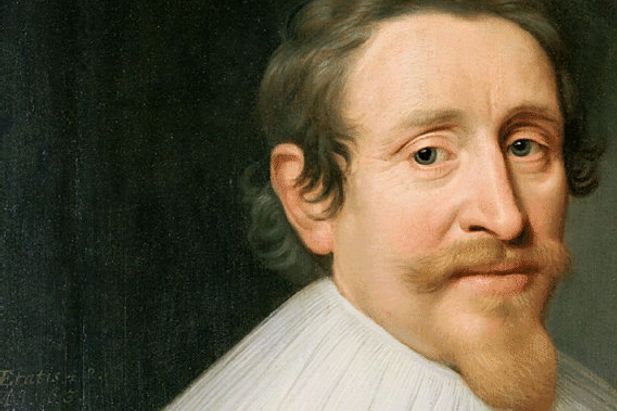



| |
Hugo Grotius (Hugo de Groot)     |  |  |
Holland History Short Information Sheet:
|
|
Holland History Information Cloud:
|
|
|
Hugo Grotius born in Delft in 1583 (the year before William of Orange was murdered). He was the intellectual prodigy of his age, and one of the ornaments of the University of Leyden. Early in life he became associated with Olden Barneveld, and when the struggle between Arminius and Goniarus broke out, he sided with the former, and exerted all his influence on the side of toleration.
Having, only in a less degree than Barneveld, excited against himself the prejudice and hatred of Maurice of Nassau, he was seized, and, at the age of 36, condemned to perpetual imprisonment in the Castle of Lovenstein, near Gorcum.
His escape is one of the most amusing stories in Dutch history. He was not denied books, and at fixed seasons these were changed by sending a large chest to and from. As the months passed, and the strictest search never discovered anything in the chest but books and linen, the guards grew careless. The ingenuity of his wife, who had been allowed to share his imprisonment, turned this slackness to account. She persuaded him on one occasion to occupy the place of the books. When the two soldiers whose duty it was to carry out the chest came, they said it was so heavy that "there must be an Arminian in it." With admirable tact, Madame Grotius replied, "There are indeed Arminian books in it." Ultimately, after various narrow escapes, he crossed the frontier and reached Antwerp, when he went on to Paris, where his wife joined him. He was never allowed to return to Holland.
He gave himself up to a great literary work which had been long in his mind, the De jure belli et pads, a treatise which at once gave him enduring fame, but which, like Paradise Lost and The Pilgrims Progress, did very little towards enriching the author. His other noted book was a work on the evidences of Christianity, published in 1627, and entitled De veritate religionis Christiana. He died an exile in 1645. And now the town of his birth honours his memory by giving him not only a tomb in the New Church, but also by placing his statue upon the most conspicuous site within her boundaries, in the very centre of that market-place where so much of tragic and historic interest has passed.
In the Town Hall hangs a portrait of Grotius by Michiel Janszoon van Mierevelt, the first in time of the great Dutch portrait painters. Delft is also associated with other famous painters, such as Van der Meer, whose picture of his native town is one of the treasures of the Hague Gallery ; Pieter de Hooch, one of the best painters of interiors; Paulus Potter, the great animal painter; and others.
|
|
|















